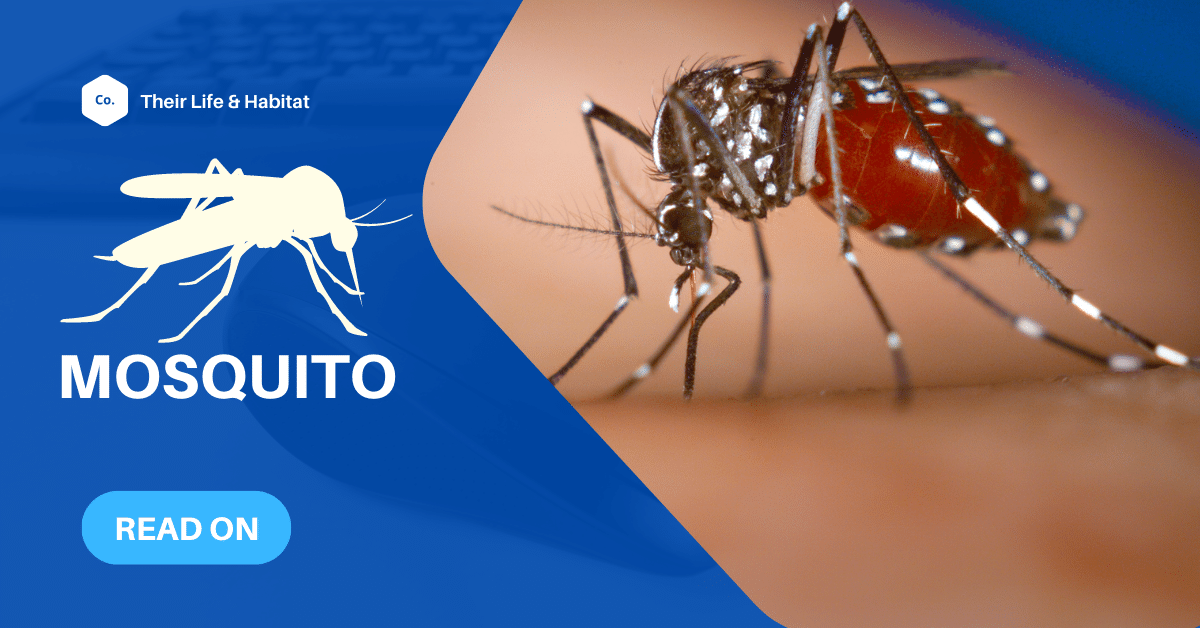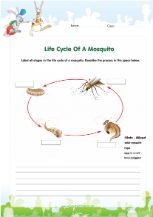Interesting Facts About Mosquitoes For Kids
Learn some interesting facts about mosquitoes. This page also features resources for kids to learn about this insect.
The word mosquito comes from Spanish and Portuguese and means small fly. It is a small insect with a segmented body, a pair of wings, a long hair-like tail, three pairs of legs, and elongated mouthparts. While most people have no idea what a mosquito looks like, they do know that it can bite. The insects can be found all over the world. Read on to learn more about this pest and how you can protect yourself and your home from it.
The smallest mosquitoes, Aedes aegypti, bite people in the summer. Although they are often associated with warm, sunny days, the Aedes aegypti can also be found in tropical regions. This species of mosquito is one of the most dangerous pests, as it can cause serious diseases if left uncontrolled. While most people have to live with the discomfort of a mosquito bite, there are ways to prevent it.

Mosquitoes are common in the United States. There are over 200 species of mosquitoes in the United States. Adult mosquitoes live about 10 to 14 days after they hatch from an egg. They are small, slender, and have whitish stripes on their abdomens. A mosquito's bites may itch, but they should not be scratched. Parents should take the time to explain to their children what a mosquito looks like.
Life cycle of a mosquito
The life cycle of a mosquito worksheet pdf
The Aedes aegypti is the most common mosquito, with over 200 species worldwide. It feeds on human blood and animal proteins. It then lays its eggs in standing water. These larvae and pupae live for weeks or months. This mosquito species is responsible for the spread of deadly diseases like dengue fever, zika, mayaro etc.
The female mosquitoes are the ones that cause mosquito malaria. Unlike most other insects, female mosquitoes are only interested in consuming a small amount of human blood and do not feed on other species. Females are capable of laying eggs in standing water. They can hibernate during the winter. They are known to be extremely annoying to humans when they come for their blood.
The female feeds on the blood of humans and animals. Its mouthparts are long and thin, allowing it to penetrate the human body. It has six legs and long, pointed, flexible wings.
The female mosquito feeds on human blood and is the most dreaded insect to humans. It feeds on blood through a bite. The mosquito in itself is actually harmless, but can cause irritation and transmit protozoans. Deaths related to mosquitoes are high and the eradication of malaria is a massive project launched by the World Health Organization.
The adult mosquito is not dangerous, but the bite is painful and can cause serious medical problems. However, it is necessary to avoid contact with the mosquito because it can transmit deadly diseases. The infection can be transmitted to other people through bites. It is important to avoid the areas where mosquitoes live.
Mosquitoes are an important part of the ecosystem and their presence amongst us cannot be avoided. Therefore, it is important to protect your family and pets from the risk of mosquito bites. If you are bitten by a mosquito, it can cause fever, rash, joint pain, and pink eye.
The life cycle of a female mosquito is divided into two stages. Their larvae feed on algae and other organic matter in the water. They are an important food source for many animals in the freshwater environment. The adult female mosquito has a tubular mouth called a proboscis. The adult stage has three pairs of limbs and an elongated mouthpiece called a snout.
If you are interested in learning more about mosquitoes, use the resources provided in this page to practice some facts related to them.
How malaria spread by mosquitoes
Malaria is spread by mosquitoes when an infected mosquito bites a person and transmits the malaria parasite into the person's bloodstream. Mosquitoes become infected with the malaria parasite when they feed on the blood of an infected person.
The malaria parasite reproduces inside the mosquito's gut and travels to its salivary glands. When the infected mosquito feeds on another person, it injects the malaria parasites along with its saliva. The parasites then enter the person's bloodstream and infect their liver and red blood cells, causing malaria.
Malaria cannot be transmitted from person to person directly. It requires the presence of Anopheles mosquitoes that carry the malaria parasite. Not all mosquitoes can transmit malaria; it is only the female Anopheles mosquitoes that are capable of transmitting the disease.
20 facts about mosquitoes
- Mosquitoes belong to the family Culicidae, which includes over 3,500 species of mosquitoes.
- Only female mosquitoes bite, as they require the protein in blood to lay their eggs.
- Mosquitoes are attracted to carbon dioxide, which is why they tend to swarm around people and animals.
- Mosquitoes can fly up to 1.5 miles per hour and can travel up to 10 miles from their breeding site.
- The average lifespan of a mosquito is about two weeks, although some species can live up to six months.
- Mosquitoes are found all over the world, except in Antarctica.
- Mosquitoes have been around for over 30 million years.
- Mosquitoes are responsible for more human deaths than any other animal, as they can transmit diseases such as malaria, Zika virus, dengue fever, and yellow fever.
- Mosquitoes have six legs and a pair of wings.
- Mosquitoes can fly in any direction, not just forward.
- Mosquitoes are more active at dawn and dusk.
- Some species of mosquitoes prefer to feed on animals, such as birds or horses, rather than humans.
- Mosquitoes can sense body heat, so they are attracted to warm-blooded animals.
- Mosquitoes have a proboscis, which is a long, thin mouthpart that they use to pierce the skin and suck blood.
- Mosquitoes can lay up to 300 eggs at once, and they usually lay their eggs in standing water.
- Mosquitoes are more attracted to people who are sweating or have recently exercised.
- Mosquitoes can carry and transmit over 40 different viruses and parasites.
- Mosquitoes can survive in a wide range of temperatures, from near-freezing to over 100 degrees Fahrenheit.
- Mosquitoes are able to detect the presence of humans from up to 50 meters away.
- Mosquitoes have a complex life cycle that includes four stages: egg, larva, pupa, and adult.

